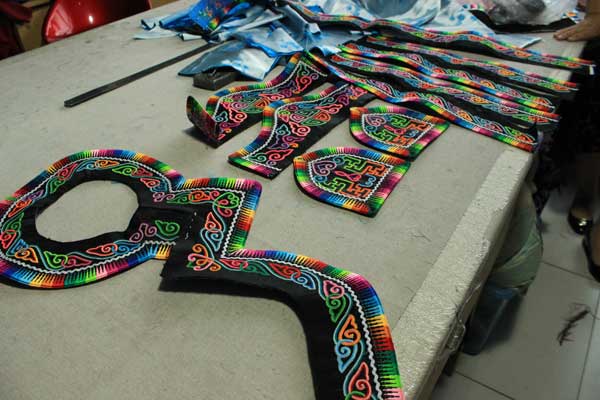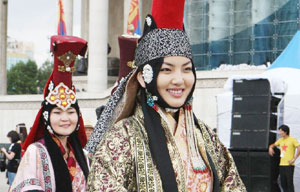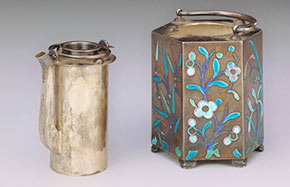Robe warriors
 |
|
A delicate Ujimqin clothing may take months to complete. |
Xilin Gol is one key cultural center for the Mongolian ethnic group. It is the gathering point for four major ancient Mongolian tribes: Ujimqin, Abag, Sonid and Chahar. Costumes from each tribe have distinctive hat shapes and decorations, including edging styles on the front of robes and images on ribbons.
Traditional Ujimqin clothing boasts flamboyant colors and style. Three wide layers of garment edging distinguish it from the other three tribes', which favor slim trimmings. A twisted waistband for a robe can be 5 meters long.
The main part of each piece of clothing takes one week to finish, but the decorations usually take nearly two months. A piece of high-end Mongolian attire in Wu's studio sells for 5,000 to 6,000 yuan ($814-980), and the decorations made completely by hand cost nearly 4,000 yuan.
"As long as the traditional flavor is preserved and the clothes are exquisite enough, I do not care how much they cost or how much time I take making them," Wu says.
But it is rare to find modern ethnic Mongolian people wearing traditional clothes in the city streets of Inner Mongolia, although older folks living in pasturing areas still use them in daily life. Wu finds the reluctance of city people to wear traditional clothing embarrassing, and laments that it is not enough to rely on festivals to revitalize the historic garb.
| Nadam fair opens in NW China | Mongolian Costume Festival |

























